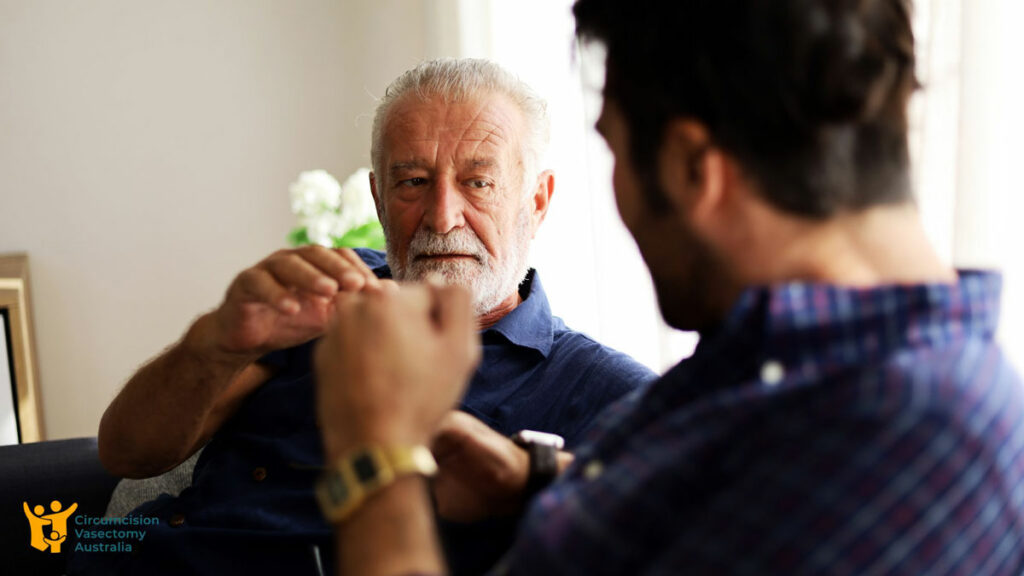Vasectomies are gaining popularity as a birth control method, but when it comes to the procedure there’s more to consider than family planning. If you’re thinking about undergoing a vasectomy procedure or just exploring your options, read on to learn some quick facts you should know before getting “the snip”.
Only local anaesthetic is required
If your vasectomy procedure is happening at a specialised clinic or at a GP, your doctor will administer local anaesthetic to your scrotum. You might feel a slight sting from the needle, however you won’t be able to feel anything once the anaesthetic starts working. The convenience of local anaesthetic is that you can drive yourself home once the vasectomy procedure is complete.
The option for general anaesthetic is there if you’re heading into hospital for day surgery, however in this case the whole procedure and recovery time is longer.
There’s more than one vasectomy method
There are two main vasectomy techniques that doctors perform – either ‘conventional’ or ‘no scalpel’. The difference between the two is how your doctor will access the part that needs to be “snipped”.
Here at Circumcision Vasectomy Australia, our doctors provide the “no scalpel” technique. As you’ve probably guessed, no scalpels or knives are required. In addition to this, our doctors also provide the fascial interposition method minimising any chance of post vasectomy pain syndrome.
You won’t need stitches
If your vasectomy doctor uses the “no scalpel” method, then you won’t need stitches following the procedure. Rather than a cut that needs suturing, the “no scalpel” vasectomy method accesses your vas deferens (the tubes that carry your sperm) via a 2mm to 3mm puncture. This small puncture heals after being gently glued back together.
You can still ejaculate following vasectomy
Yes, you can still ejaculate after having a vasectomy, and the ejaculate liquid will look the same as it did before. Semen contains several different bodily fluids, of which only 5% is sperm. Your erectile function, sex drive and “performance” will remain the same as before the vasectomy procedure as well.
Sterilisation doesn’t happen immediately after a vasectomy
You won’t be sterile immediately after your vasectomy procedure, as the remaining sperm will need to be cleared out completely. That means, in the meantime you should use alternative methods of birth control like condoms or the contraceptive pill.
It can take from two to six months to get the “all clear”. To be safe, your vasectomy doctor will take a semen sample to test three months after the procedure. Once it’s been confirmed by your doctor, you’ll no longer need to use contraception.
You should consider the procedure irreversible
If you do decide to have a vasectomy, you should do so with the mindset that it’s an irreversible procedure. While there technically is a vasectomy reversal surgery, it’s expensive, invasive and has a low success rate – which gets even lower the more time that passes following the original procedure.
It’s best to be 100% sure that you don’t want to become a parent to any more children, keeping in mind that life is dynamic and unexpected opportunities may arise.
You don’t need partner permission (but you should get it)
There is no legal requirement in Australia for spousal approval when it comes to making the decision to have a vasectomy. Regardless, if you do have a partner, keep in mind that it is a huge decision to make, and you should both be on the same page about your future and children.
There are minor risks and side effects
Like with any procedure, there are minor risks and side effects to be aware of. Following the vasectomy, there’s a small risk of bleeding and infection, along with bruising and discomfort – which can be managed with an ice pack and paracetamol/minor pain killers. Of course, if your side effects worsen, you can contact your vasectomy doctor. The “no scalpel” procedure option on offer here at Circumcision Vasectomy Australia is the most painless recovery.
There is also a small chance that the vas deferens (the tubes that get “snipped”) will find each other again within the scrotum and reconnect. To lessen the chances of this happening, our doctors implement the “fascial interposition” technique, where a layer of tissue is placed between the open ends of each tube.
Vasectomy is not the perfect form of protection
No form of contraception is perfect; however, vasectomy is one of the best there is! With vasectomy, the pregnancy rate is just 0.15%, compared to 9% for the pill and 2% for condoms.
It’s also vital to keep in mind that, like the contraceptive pill, vasectomy doesn’t protect against STIs.
Recovery is generally quick
The good news is, if you’ve undergone a vasectomy with us here at Circumcision Vasectomy Australia, you’ll be well on the way to recovery in just a few days.
You should try and avoid bike riding and contact sports for 4 weeks, but you can do light physical activity 1 week out from your visit to the vasectomy clinic.
Most vasectomy patients can have sex again one week after the procedure.
If you’d like to learn any more facts about Vasectomy, or if you’d like to know more, please don’t hesitate to get in touch with our friendly Melbourne team. We’re always here to discuss your options and talk through a vasectomy procedure with you. Book a consultation today with our friendly team or call us at (03) 9007 2020.
About The Author

Dr. Shehab Abdalla is the Director of Circumcision Vasectomy Australia. He has completed a fellowship through the Royal Australian College of General Practitioners and now specialises in circumcisions and vasectomies.
Connect with Dr. Shehab Abdalla on LinkedIn




